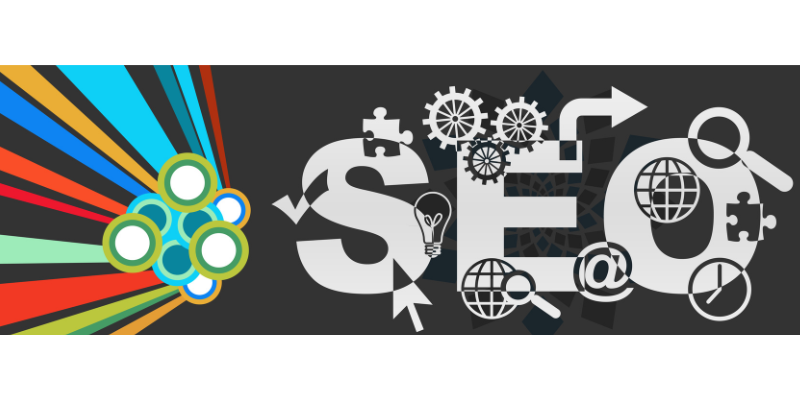In the world of digital marketing, two terms that often get thrown around are SEO and SEM.
Table of Contents
ToggleWhile they may sound similar, they serve different purposes and have distinct strategies. Understanding the difference between SEO vs SEM is crucial for any business looking to improve their online presence and attract more customers.

Understanding the Basics of SEO
Search Engine Optimization, or SEO, is a fundamental component of digital marketing aimed at enhancing a website’s visibility within search engines.
This is achieved by implementing various optimization strategies designed to appeal to the algorithms that search engines like Google use to rank pages.
Essential elements of SEO include optimizing website content with relevant keywords, improving site speed, ensuring mobile friendliness, and securing quality backlinks from reputable sites.
These efforts are geared towards improving a site’s ranking in the SERPs for specific search queries related to the business or content offered.
A key aspect of SEO is its focus on organic traffic, which refers to visitors who arrive at a website naturally through search engine results, not through paid advertisements.
To excel in SEO, one must also understand the importance of creating high-quality, valuable content that addresses the needs and questions of the audience.
Additionally, technical SEO—such as enhancing a site’s structure, implementing schema markup, and improving user experience—is crucial for helping search engines crawl and index a website more effectively.
By focusing on these strategies, businesses can increase their site’s visibility, attracting more visitors organically.
This not only boosts online presence but also supports the credibility and authority of the website in its respective industry.
Effective SEO requires continuous effort and adaptation to the ever-changing algorithms and trends within the digital landscape, making it a dynamic yet essential practice for sustained online success.
Diving into the World of SEM
Search Engine Marketing, abbreviated as SEM, encompasses a suite of paid advertising strategies aimed at bolstering a website’s visibility in search engine results pages (SERPs).
Unlike SEO, which focuses on organic search enhancements, SEM leverages the power of paid tactics to position your site in front of potential customers more prominently and quickly.
This realm includes various forms of digital advertising such as pay-per-click (PPC) ads, where advertisers pay a fee each time their ad is clicked, display advertisements that appear on websites or social media platforms, and remarketing efforts that target users who have previously visited your website, encouraging them to return.
A critical component of SEM is the use of keywords.
Advertisers bid on keywords relevant to their target market, expecting to appear in the paid search results when these terms are queried.
This approach allows for an incredible level of targeting, enabling businesses to showcase their products or services to users actively seeking related information.
Additionally, SEM provides the advantage of immediate visibility.
While SEO efforts may take months to materialize fully, SEM can offer instant visibility in search engines, making it an invaluable strategy for new websites or those seeking quick results.
SEM also includes comprehensive analytics, allowing marketers to measure the effectiveness of their campaigns precisely.
This data-driven approach ensures that businesses can fine-tune their advertising strategies for maximum impact, adjusting bids, ad copy, and targeting options based on performance metrics.
This adaptability is key to maximizing return on investment in the competitive digital landscape.
The Key Differences Between SEO and SEM
The primary distinction between SEO vs SEM lies in their approach toward enhancing visibility on search engine results pages.
SEO, or Search Engine Optimization, is the practice of organically improving your site’s ranking within search engines.
It is a long-term strategy, focusing on content optimization, link building, and improving user experience to naturally attract visitors over time.
This method does not involve direct payment to search engines for traffic and rankings.
Conversely, SEM, or Search Engine Marketing, is a broader term that includes SEO but mainly focuses on paid strategies to increase search visibility.
SEM strategies, such as pay-per-click (PPC) advertising, require a budget to bid on keywords for the chance to appear above organic search results in the form of ads.
This method provides an immediate boost in visibility and traffic, offering quick results compared to the gradual process of SEO.
Another key difference is the specificity and control over targeting that SEM offers.
Through SEM, businesses can directly target potential customers based on demographics, interests, and more detailed criteria, making it easier to reach a specific audience swiftly.
Meanwhile, SEO targets users based on the relevance and authority of content, which takes time to develop and is more organic.
In essence, while SEO focuses on earning traffic through free, organic search results, SEM buys traffic through paid search listings, offering businesses a quicker way to gain visibility in the competitive digital space.

When to Use SEO Over SEM
Opting for SEO is an excellent marketing strategy for entities focused on establishing a durable online presence organically, without the immediate expense of paid advertising.
It’s particularly advantageous for companies that are in the early stages of their digital journey or those operating with a constrained budget.
SEO’s strength lies in its capacity to gradually enhance a website’s discoverability through search engines by aligning content with what potential customers are seeking.
This method is most effective in market niches where competition is moderate to low, allowing for easier visibility in organic search results.
For businesses willing to invest time in content creation, website optimization, and establishing authority in their domain, SEO offers a solid foundation for attracting a steady stream of organic traffic.
It encourages a focus on developing a user-friendly website and valuable content that resonates with the target audience, thereby improving the likelihood of engagement and conversion over time.
This approach is less about instant gratification and more about building a lasting relationship with your audience, which can be significantly rewarding for businesses aiming for sustainable growth and brand loyalty.
Organizations that prioritize these long-term benefits will find SEO to be a crucial component of their overall digital marketing strategy.
When to Choose SEM Strategies Over SEO
Selecting SEM strategies over SEO is a strategic move for companies that require a swift influx of traffic to meet immediate goals or promotional timelines.
This approach suits businesses with the financial resources to invest in advertising and those looking to quickly capture market attention, especially during product launches, special events, or when entering a highly competitive market space.
SEM’s ability to rapidly position your website in front of a targeted audience offers a distinct advantage for campaigns that rely on timing and direct consumer engagement.
Companies can benefit from SEM’s flexible targeting options, which allow for precise audience segmentation based on location, interests, and behavior.
This level of control is indispensable for businesses aiming to reach a niche market or to stand out in sectors where organic search is dominated by established competitors.
Moreover, SEM’s measurable outcomes provide immediate feedback on campaign effectiveness, enabling quick adjustments to optimize ad spend and content for better results.
For businesses that require a blend of visibility and speed to generate leads or drive sales, SEM presents a viable alternative to the slower pace of SEO.
It is especially relevant for those looking to test new markets or product lines, as it provides valuable insights into consumer response without the lengthy groundwork associated with SEO efforts.
In scenarios where time is of the essence and competition is fierce, SEM strategies offer a tactical advantage to achieve business objectives promptly.

Combining SEO and SEM for Maximum Effect
Leveraging the strengths of both SEO and SEM creates a synergistic digital marketing strategy that can significantly amplify a business’s online presence.
The integration of SEO’s organic growth tactics with SEM’s targeted advertising approaches allows for a comprehensive visibility strategy across search engines.
This dual approach not only enhances a brand’s reach but also increases the likelihood of capturing a broader audience.
By using SEO techniques to solidify the foundation and credibility of your website, and complementing it with SEM’s capacity for immediate traffic and conversion opportunities, companies can create a dynamic online marketing plan that drives sustained traffic while also capitalizing on quick wins.
Employing SEM can help fill the visibility gap during the early stages of SEO implementation, ensuring that a business remains visible to its target audience.
Concurrently, the organic growth facilitated by SEO efforts can gradually reduce dependence on paid advertisements, leading to a more cost-effective long-term strategy.
This holistic approach requires careful coordination, with ongoing analysis and adjustment to ensure that both SEO and SEM efforts are not only aligned with each other but also with the overarching business objectives.
This strategic combination promises a balanced approach to achieving both immediate and enduring online success.
The Impact of SEO and SEM on Business Growth
The synergy between SEO and SEM transcends the realm of search engine rankings, branching out into the holistic growth and scalability of a business in the digital domain.
By harnessing the organic power of SEO, businesses cultivate a robust online presence that is both credible and authoritative.
This not only attracts a steady stream of targeted traffic but also lays down a foundation of trust with potential customers.
On the flip side, SEM accelerates this growth trajectory by injecting immediate visibility and direct engagement with the target audience, making it indispensable for campaigns with tight timelines or for testing new markets.
This complementary blend allows businesses to not only capture but also retain a diverse audience, facilitating an environment ripe for lead generation and conversion optimization.
As companies navigate through the intricacies of digital marketing, the strategic application of SEO and SEM emerges as a cornerstone for achieving competitive differentiation and fostering an environment of sustained business growth.
Through continuous refinement and adaptation to digital trends, businesses can effectively leverage these practices to navigate the complexities of the online marketplace, ensuring a dynamic and responsive approach to consumer engagement and brand development.
Future Trends in SEO and SEM
The landscape of SEO vs SEM is perpetually in flux, shaped by innovations in technology and shifts in user preferences.
Looking forward, the integration of AI and machine learning algorithms stands to revolutionize how search engines interpret user intent, leading to more personalized search results and advertisements.
This could mean an increased focus on semantic search in SEO, where the context and relationship between words become as crucial as the keywords themselves.
Additionally, the rise of visual and voice search is set to alter the nature of search queries, with a growing need for content to be optimized for conversational language and visual discovery.
These advancements underscore the importance of adaptable, content-rich SEO strategies that cater to the evolving ways people search and consume information.
In the SEM sphere, automation and smart bidding strategies are expected to become more prevalent, enabling advertisers to optimize their campaigns more efficiently and with greater precision.
As platforms collect more data on user behavior, the ability to target ads will improve, potentially making every search result and ad placement more relevant and effective.
With these changes on the horizon, staying informed and flexible in SEO and SEM approaches will be essential for businesses aiming to maintain and enhance their online visibility and engagement.
Best Practices for Implementing SEO and SEM Together
Integrating SEO and SEM strategies requires a harmonized approach that aligns with your business objectives.
Begin by conducting comprehensive keyword research that serves both your organic content and paid ads, ensuring consistency across your digital presence.
Utilize analytics tools to meticulously compare your SEO vs SEM performance, analyzing the data to identify opportunities for optimization.
It’s crucial to maintain a balance; while SEO builds your foundation and credibility, SEM can quickly target and convert specific audiences.
Regularly review and refine your keyword strategy based on performance metrics, and be prepared to adjust your approach in response to search trends and algorithm updates.
Testing various ad copies, landing pages, and SEO tactics will help pinpoint the most effective strategies for your brand, facilitating a cohesive and powerful online marketing strategy.
Remember, the key to success lies in the continuous evaluation and synchronization of your SEO and SEM efforts.

